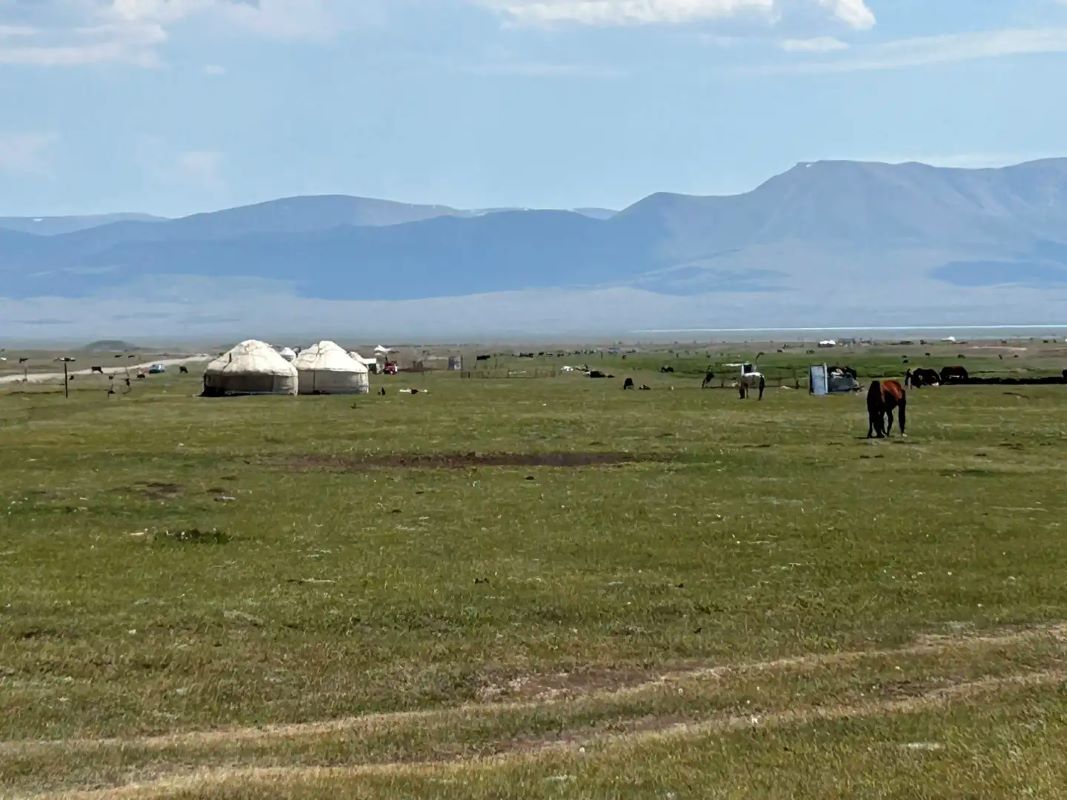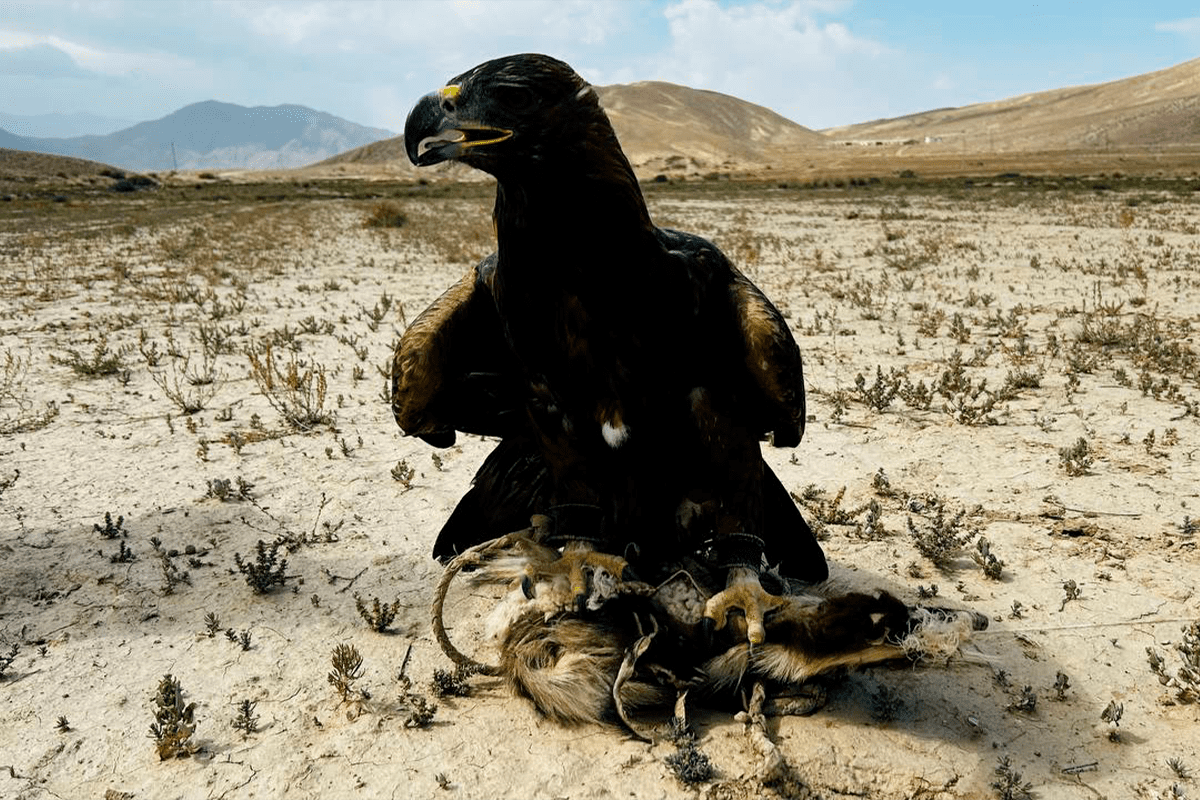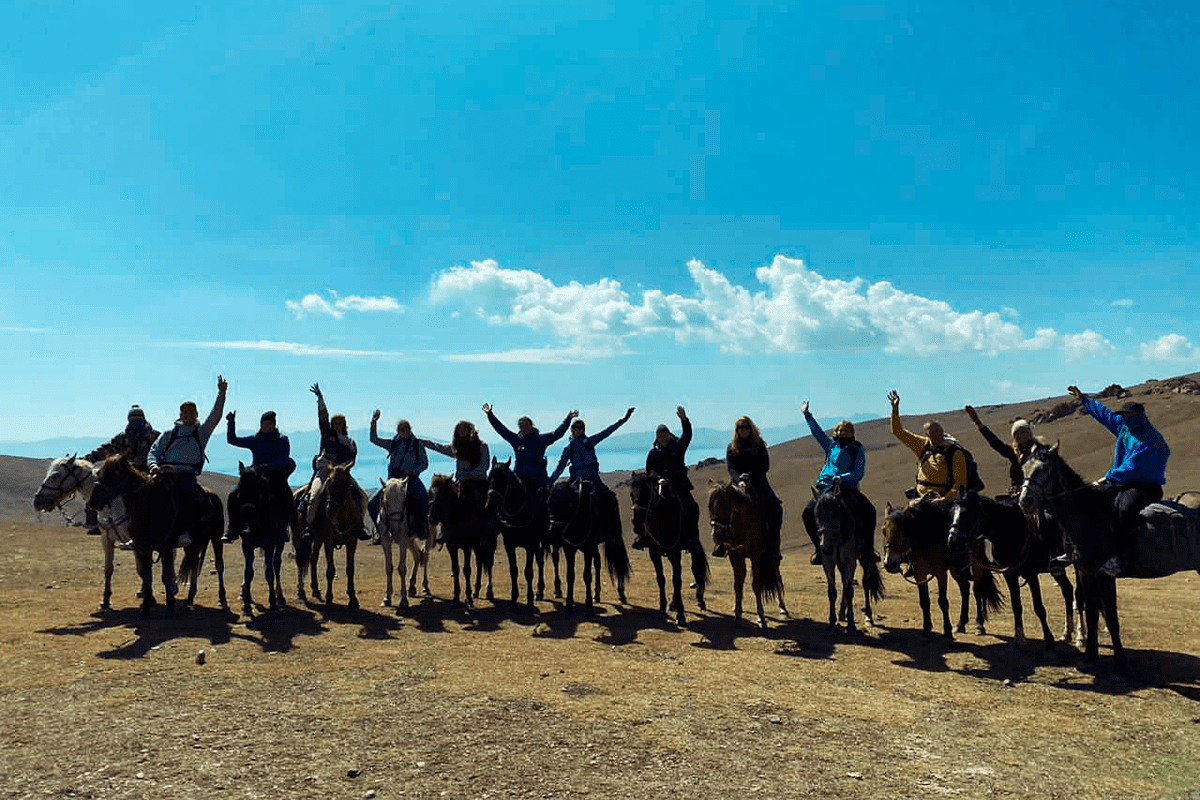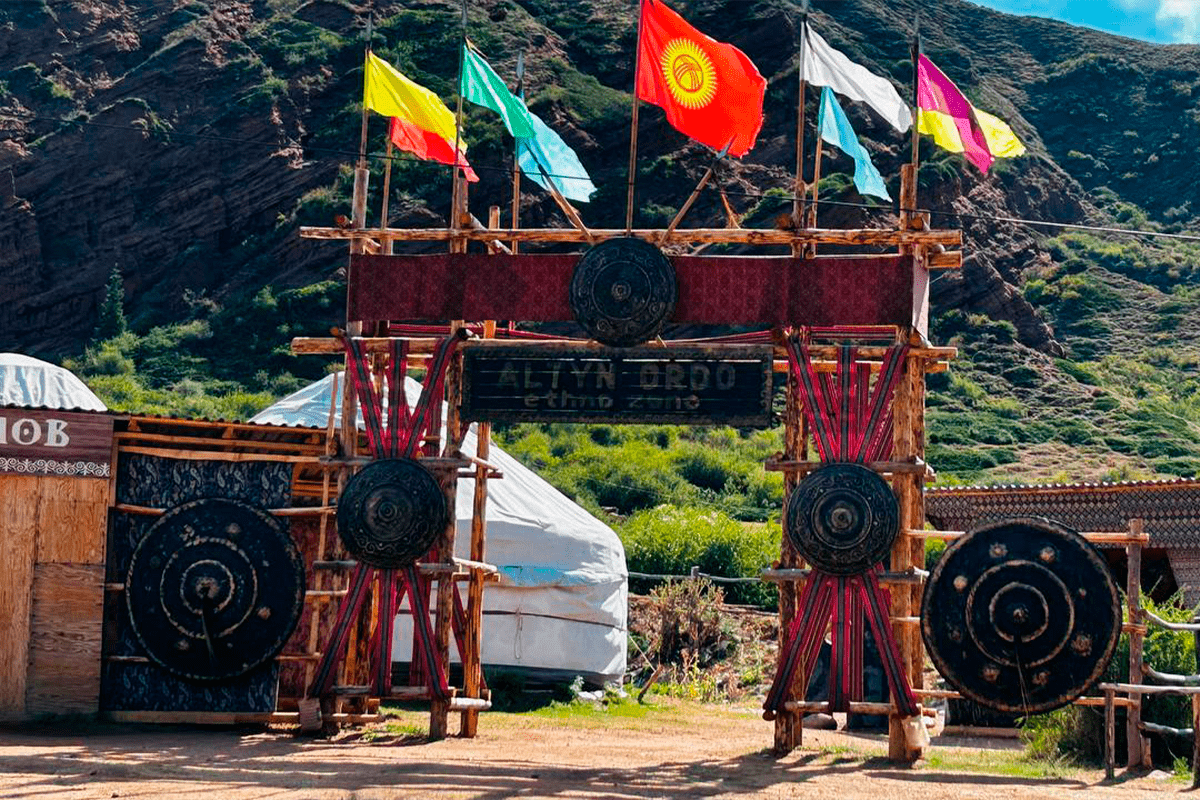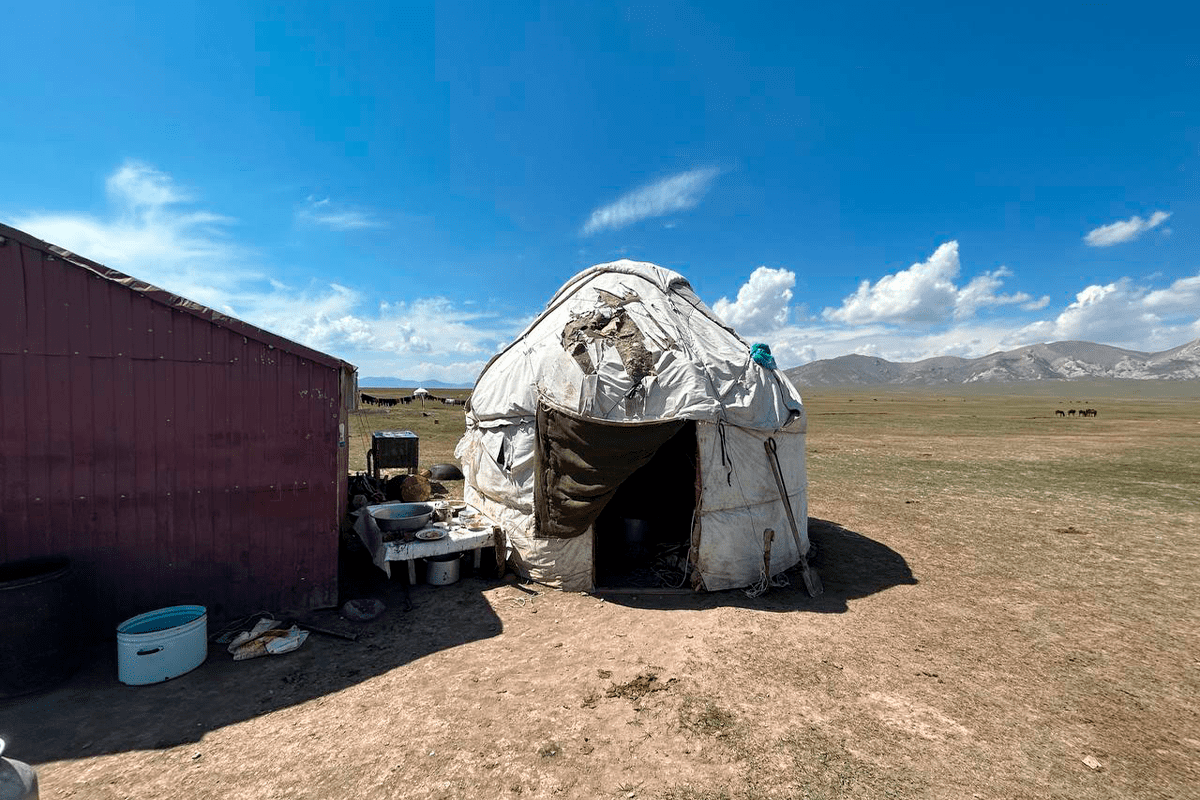Jergalan Valley.According to local residents, the Zhergalan Valley is a territory blessed by God. Their words are convincing. Seven nearby peaks surround the valley, offering beautiful scenery and an ideal climate for year-round travel. During the hot summer months, cool breezes from the glacier provide pleasant long walks, horseback riding and mountain biking. Lovers of winter hiking can meet beauties that they have only seen in pictures and in movies. And unlike them, in winter you can not only see, but also feel the harsh beauty of the mountains.
Zhergalan (also called Dzhilgaran) is a stunning mountain valley in the eastern part of Issyk-Kul region, 60 km northeast of the city of Karakol, near the border with Kazakhstan.
This is an unusual valley in this part of the Tien Shan, with many steep slopes and sharp peaks. Zhergalan is very popular among tourists who come here all year round. In summer, there is a medical and wellness complex of the kumys health resort, and in winter there are fans of off-piste skiing and snowboarding. Although there is no ski base in the valley, due to the relatively close location of Lake Issyk-Kul and the absence of wind blowing through the valley, snow lies here from November to March. Since there are no lifts and cable cars here, many use all-terrain vehicles that take mountain lovers to the slopes. Especially stubborn people climb the mountain on their own.
The slopes of the valley are covered with dense forests of Tien Shan fir. In summer, the valley is covered with a carpet of flowers, and at the beginning of the season, visitors can collect mushrooms, which grow in huge numbers under the fir trees.
Lakes, rivers and waterfalls adorn even the most beautiful mountain landscapes of Kyrgyzstan. The history of the Zhergalan Valley is a story of rebirth and renewal.
Once upon a time, the village of Zhergalan was a thriving mining town: the Zhelgarinsky mine, founded in 1932, was a profitable enterprise in Soviet times, where families built houses, used water, and children attended local schools. After the collapse of the Soviet Union, economic activity in the city declined. Local residents lost their livelihoods, mining stopped, most houses had no running water and sewerage.
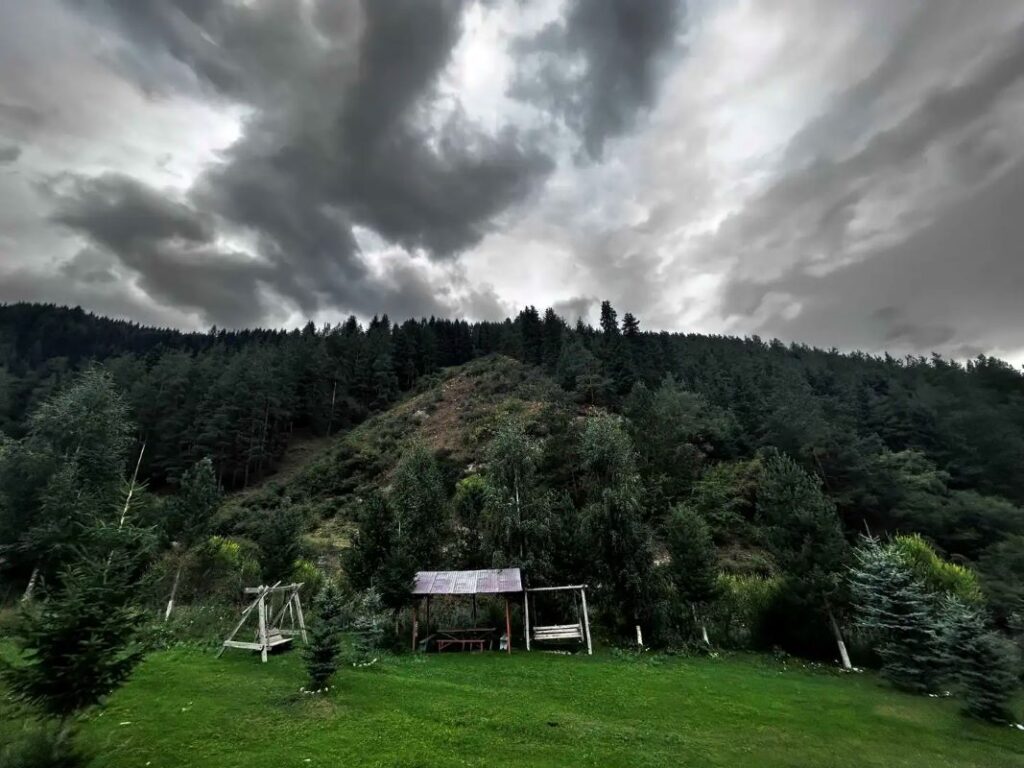

By the mid-1990s, many locals had lost hope that the city would be able to recover after a seemingly endless series of failures. Local residents have left their villages. The natural beauty of these places has no analogues in the world, but the locals did not see the future. Those who could not afford to leave (their houses had a small resale value) did not see a chance for their children to stay in the Zhergalan Valley.
In 2016, six local families joined together to form a Tourist Destination Management organization (OUTM), which operates as a non-profit social enterprise with the aim of improving the city’s ability to attract and receive international independent travelers. Dreaming of a better future for themselves and their children, the locals have renovated their homes, improved living conditions, built a water supply, passed hospitality training courses and guide courses, and all this in the hope that tourists will find this small village as attractive as they think.
In 2016, six local families joined together to create a Tourist destination management organization (OUTM), which operates as a non-profit social enterprise with the aim of improving the city’s ability to attract and receive foreign individual travelers. Dreaming of a better future for themselves and their children, local residents have renovated their homes, built housing and plumbing, improved the system of hospitality training and guide courses, and all this in the hope that tourists will find this small village as attractive as themselves.Individual Nomads Life tours are a great opportunity to make a route according to your wishes. We offer a wide selection of walking, cycling, horseback riding, automobile, ethno-tours and, of course, tours combining two or more different sightseeing routes.

